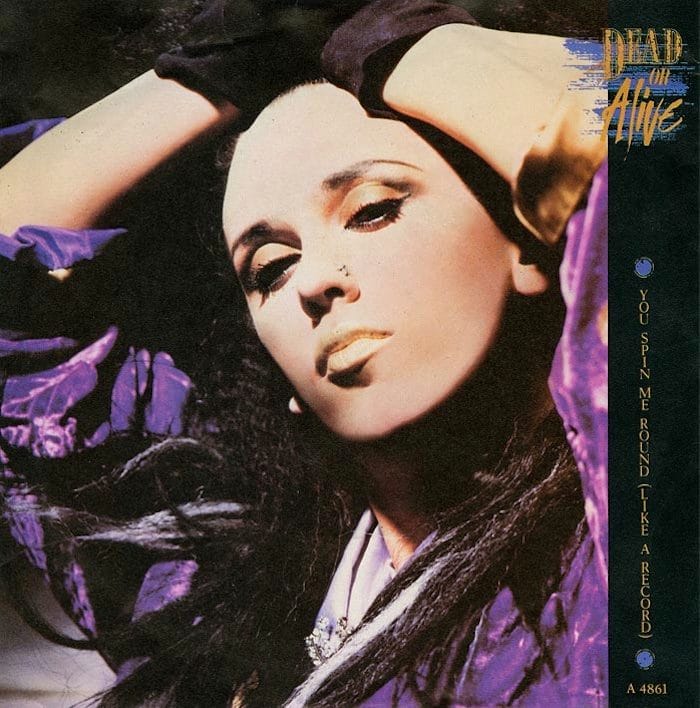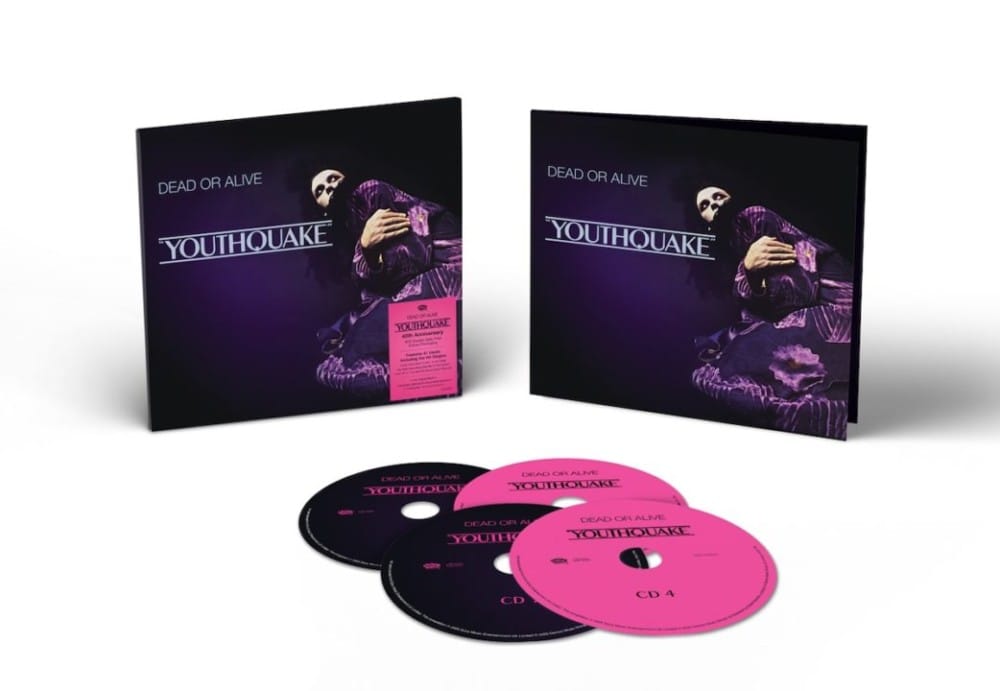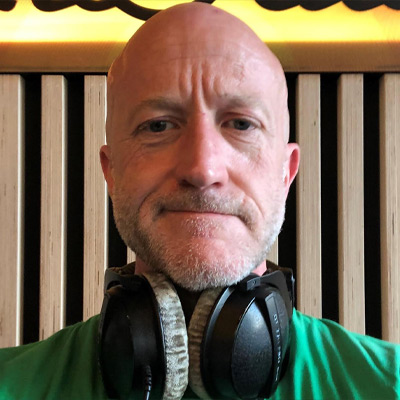Producer Pete Waterman reflects on the making of Dead Or Alive’s Youthquake
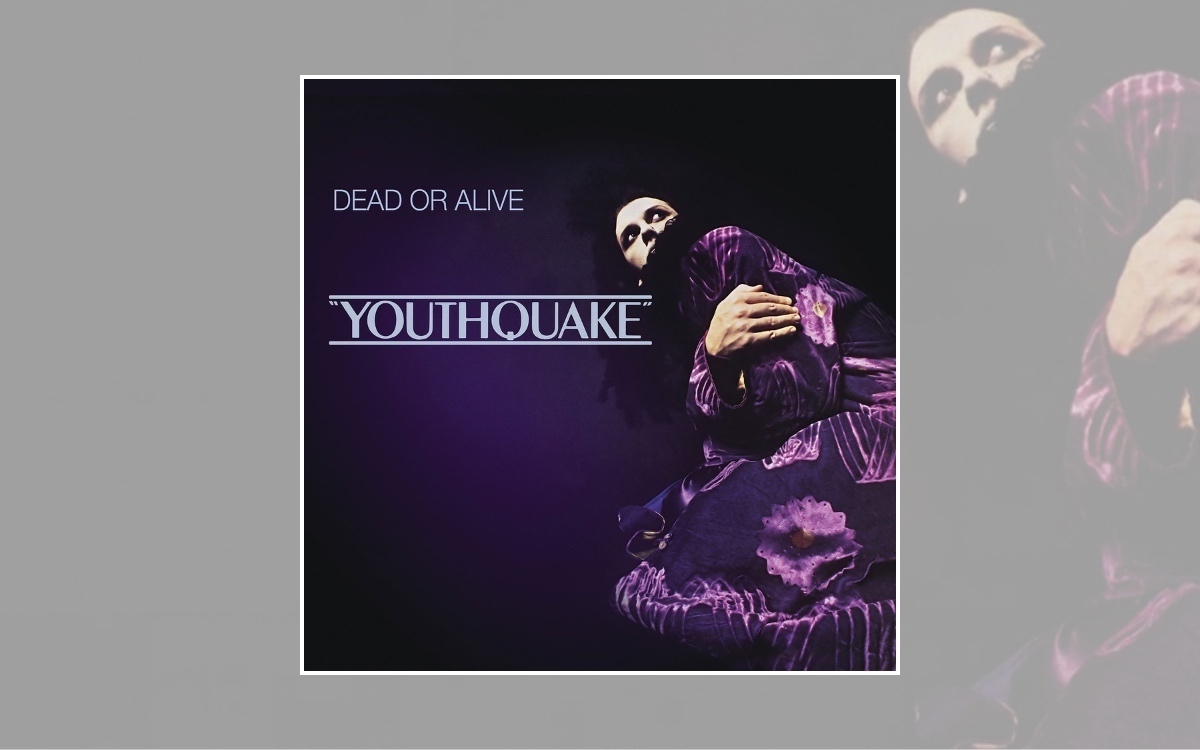
Youthquake: “A significant cultural, political or social change that occurs because of the actions or influence of young people”, and ‘word of the year’ according to the Oxford English Dictionary in 2017. However, more importantly, it was Dead Or Alive’s second studio album. As the LP gets a 40th anniversary deluxe reissue, we go behind the scenes with producer Pete Waterman.
Originally released in May 1985, Youthquake emerged just as Dead Or Alive had finally conquered pop. The album arrived after the crawl to No.1 of the band’s smash single You Spin Me Round (Like A Record) had given Pete Burns and co the long-threatened success they deserved, taking them into the Top 10s of most of Europe, and made No.11 in the United States.
Dead Or Alive were stars at last. Youthquake was also significant for being the first album to be fully helmed by Stock Aitken Waterman, an occasionally uneasy union that helped propel both Dead Or Alive and the production trio to global fame and notoriety.
Now, as the album approaches its 40th anniversary, it’s being reissued as a 4CD celebration, featuring the newly-remastered LP alongside a myriad of mixes of You Spin Me Round and subsequent singles Lover Come Back To Me, In Too Deep and My Heart Goes Bang (Get Me To The Doctor) as well as a live performance from the Youthquake Tour at the Hammersmith Odeon in London. It remains just as thrilling, bombastic and in-your-face as ever, capturing a key moment when the planet woke up to the giddy thrill of Dead Or Alive.
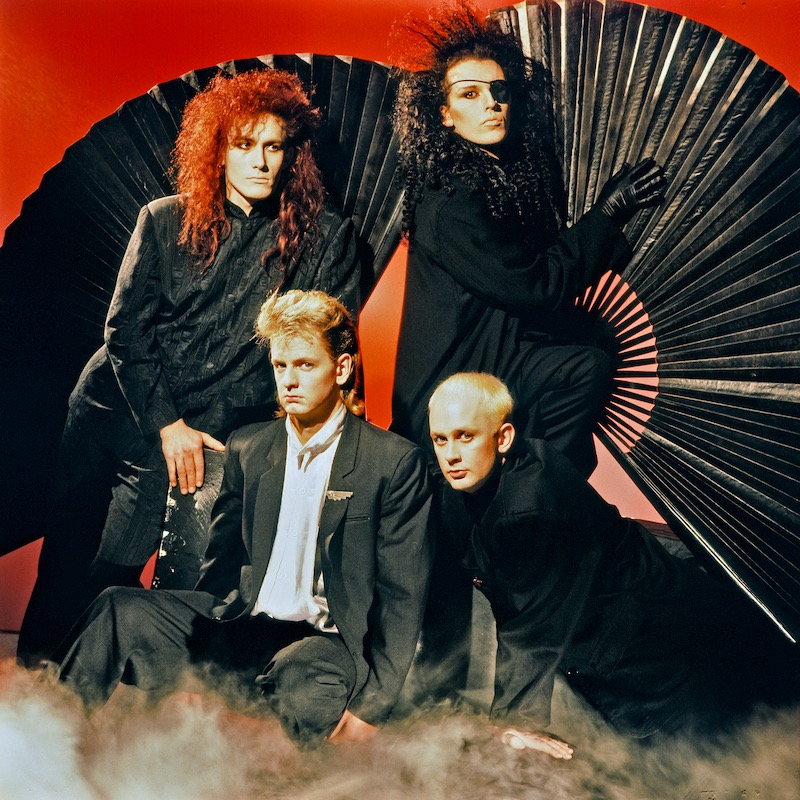
Picture credit: Paul Cox
The Hit Factory
But it wasn’t always so straightforward. His band’s meeting with Stock Aitken Waterman came after an epiphany in Burns’ bedroom. “Lynne [Corlett – Burns’ wife] and I had a radio alarm clock next to our bed, and it was always on,” Pete reflected in his autobiography Freak Unique. “It was on that that I heard two songs that spoke to me. The first came from Hazell Dean. Wherever I Go (Whatever I Do) [sic] had thepolish and the production value I craved. I sat on the bed, motionless, trying to piece together how it was done. Then I heard Divine’s new single, You Think You’re A Man. Again, I pretty much froze in the bedroom. It didn’t sound as good as Native Love, but it was still fabulous, still the kind of music I wanted to make.”
After assuming that it had been Bobby Orlando who’d produced the Divine toe-tap, Burns was shocked to realise it was actually the work of three up-and-coming producers based nearer to home who had yet to coalesce into what would become Stock Aitken Waterman.
After initial wariness from the record label, and finally meeting Pete Waterman, Burns was keen to record a track with him. However, his label Epic exactly weren’t wild on the idea, dismissing Waterman as a producer.
As Burns detailed in Freak Unique, he had to bypass the record company: “I’d brought management on board whom the record company had said not to use… That was the Chris Morrison Organisation and Chris Morrison jumped on ‘Spin Me’ and arranged a bank loan for me from the NatWest Student Bank in Liverpool to record it.”
In A Spin
“CBS were very much against us producing it,” recalls Pete Waterman now. “Even the three tracks that we got. The only reason we got to produce those three was because Pete Burns insisted. So it wasn’t a marriage made in heaven as far as the record company were concerned. Literally, the budget, including all the fees and everything, was £3,000. That included all musicians’ fees, studio fees, the whole lot. Even in that period, that was low. I would’ve had to subsidise the recording, but wanted to produce Dead Or Alive, so I would have done deals to get that done.”
Although Waterman’s interest was piqued, the big hit wasn’t quite there. “Those three tracks didn’t actually include You Spin Me Round initially, and there was no plan at that point for an album,” remembers Waterman. “We never thought there would be an album at all. Just three tracks. What happened was that the band said they’d been rehearsing and practising some new songs. And Tim [Lever] had got a new synthesizer, which he was raving about, which he talked Pete into giving him money for.”
Waterman saw this as a significant development, remembering that: “It was a quite cheap synthesizer, but it sequenced for them. That was novel. And when we got to the studio, Pete said that they’d written a couple of new tracks over the weekend and he was very excited about one in particular and would I listen to it? He played me You Spin Me Round, and I just went, ‘That’s it! Let’s forget the rest because that’s the track!’ So we were already contracted to produce three tracks, and laid them down as fast as possible. Then I said, ‘Let’s concentrate on Spin Me Round, which is what we did.”
Driven By Desire
Burns later recalled in his autobiography that, “Pete Waterman said we’d got a No.1, so we got going. We were still hungry and still fighting. We had no real money, no proper budget. But what we did have was a new desire to take it all on again, the studio equipment and the song.”
Waterman recalls that: “We did enough work to be able to go to CBS to say that we had the bones of four tracks for the price of three, but we’d finished You Spin Me Round. I knew how exciting that record was at eight o’clock the next morning after we mixed it, and I chucked everybody out of the studio. Phil [Harding – SAW engineer] and I worked all night. I realised that we had to be finished by about half-eight, quarter to nine, because Pete and the band were in at 11am. I told Matt [Aitken] and Mike [Stock] not to come in until 1pm.
“Phil and I had been up for about 36 hours at this point. I remember saying to him, ‘Turn up the volume till there’s blood coming out of my ears’. I’ll never forget, the band stood behind the desk and it came out of those speakers. Even though I was knackered, it was just different. It was really, really exciting. It was like, ‘Whoa! What is this?’ Pete went nuts, Steve [Coy, Dead Or Alive drummer] went nuts, everybody was jumping around and the band were all ringing their management. Everybody was excited, it was a case of ‘Let’s carry on and make an album.’”
Feel The Burn
But it wasn’t all fun and games producing Dead Or Alive, with fights and arguments galore, which led to a tense environment at times. “When we got to the album, Pete would never allow us to be that exciting and experimental because I didn’t want a real instrument on tape, yet Dead Or Alive thought they were a rock’n’roll band. Pete also didn’t want to actually finish anything!” claims Waterman. “The whole artistic thing was for Pete to be locked in the studio for months and months on end.” Not entirely the methods that SAW were keen on…
“For us, it was like the kiss of death. We were normally in and out, make a hit, get out within two or three days. So to get locked up with Pete Burns for four months was like purgatory. I mean, there were some quite sharp conversations. As I say, we couldn’t get used to the fact that he’d walk in one day and the thing we’d been doing for three days previously, he wouldn’t even get the tape out.”
Waterman remembers it being exasperating dealing with perfectionists such as Burns. “He would just walk in and say, ‘I’ve heard this Michael Jackson track. This is what I want to do now’. Often you would go in a completely different direction from what you were doing. He came in one day and suggested this idea for a cowboy song. So I did a sort of high-energy cowboy rhythm sort of thing. The song, when he actually played and sang over the top, was absolutely fantastic. I happened to say, ‘My God, that sounds like The Beatles.’ Well, that was it. That was it. He literally pulled the tape off the machine and would never talk about it again.”
Fighting Talk
While Youthquake eventually came into being, it was not without almost coming to blows between both camps, adds Waterman. “It is not untrue to say that there was no love lost between Pete and Steve and Matt [Aitken] and Mike [Stock] because Matt and Mike are incredible musicians. They found it an affront being talked to by guys who were not good musicians about how they wanted to play their music. And it was like, ‘This is bullshit. Let’s talk. What are we doing here?’ That was a pity because Pete was actually quite brilliant coming up with a concept. You could then take that concept and he would write you lyrics in seconds.
“Pete and I, we loved each other,” reckons Waterman. “It was great. But Steve was always so jealous, and Pete’s wife Lynne was fantastic. Steve couldn’t quite cope with that. He couldn’t bully me the way he bullied everybody else. Obviously when he’d had the hit with CBS, Steve became the bully at CBS.”
The Aftershock
Burns had mixed feelings about that time, saying to Classic Pop’s John Earls in 2016 that, “Youthquake is the album I was most dissatisfied with. I don’t feel I came out of the SAW experience having learned anything, other than that the recording industry was a business and you can have a hit and everything has to sound the same way. One of the unhappiest days of my life was when Spin Me reached No.1 – and I mean really unhappy. I knew it would be downhill all the way after that.”
And how does Pete Waterman, the architect of Dead Or Alive’s ascent into stardom, reflect on the success of the Youthquake LP, 40 years on? “Well for me personally, I think that we, again, like Band Aid in a strange sort of way, we’ve been denied being part of that Youthquake, [success] in my opinion.”
“Pete Burns, though,” Waterman continues, “changed the whole face of music with his androgynous look. ‘Is it male or is it female?’ Who cares? It’s Pete Burns.”
Order the 4CD 40th anniversary reissue of Youthquake here
Read More: Pete Burns – his final interview
Classic Pop may earn commission from the links on this page, but we only feature products we think you will enjoy.

